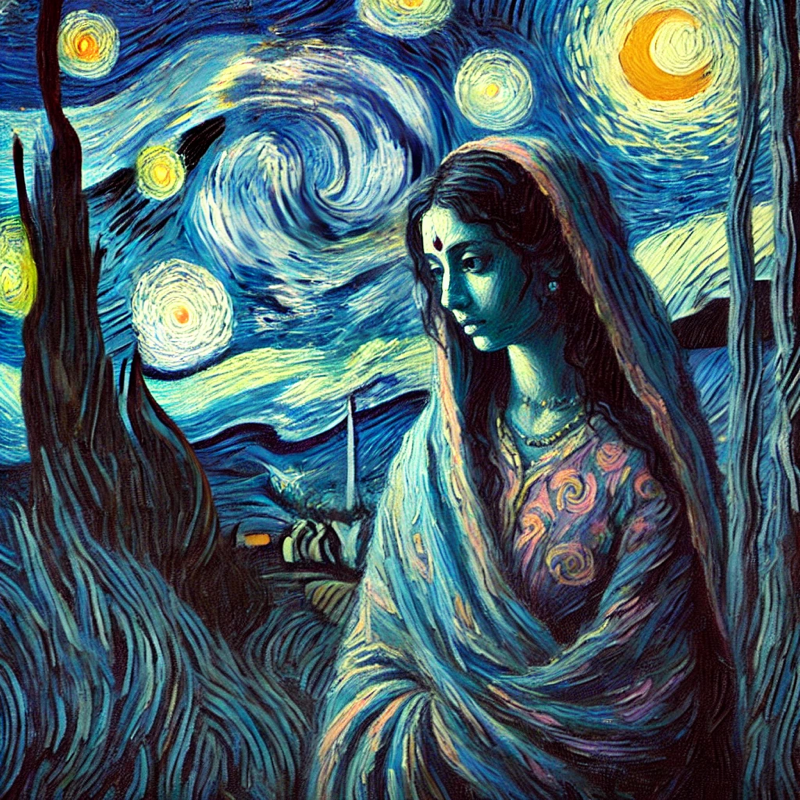Sita Devi: A Reflection on Her Trials and Strength
Sita Devi faced immense societal scrutiny after her abduction by Ravana, despite her unwavering devotion and purity. Her trials, including the Agni Pariksha, highlight the deep-rooted biases women endure. Her story teaches resilience, dignity, and the strength to rise above judgment.

Introduction
Sita Devi, the revered queen of Ayodhya and the epitome of devotion and righteousness, remains one of the most profound figures in Hindu mythology. Her story, as told in the Ramayana, is often viewed as a testament to patience, virtue, and unwavering faith. However, beyond the spiritual and devotional reverence she commands, Sita’s life was also marked by intense trials, especially after her abduction by Ravana. This event not only challenged her personal dignity but also led to societal scrutiny, raising questions about justice, honor, and the treatment of women in society. In this reflection, we explore the challenges Sita faced, how she responded to them, and what we can learn from her story.
The Stigma and Judgment She Faced
The moment Ravana abducted Sita, she became a subject of speculation and doubt. Despite her complete purity and resistance to Ravana’s advances, her very presence in Lanka became a stain in the eyes of many. Upon her rescue, instead of being welcomed with unshaken acceptance, she was subjected to harsh scrutiny. People whispered, questioned, and doubted whether she had remained chaste during her captivity.
Even though Lord Rama deeply loved Sita, he, too, found himself torn between his personal faith in her and his duty as a king. A ruler, according to the prevailing norms, had to ensure his own reputation remained untainted in the eyes of his subjects. This led to the agonizing trial by fire (Agni Pariksha), where Sita had to prove her purity through an ordeal that no woman should ever have to endure. She walked through flames, unscathed, demonstrating her innocence. But even after this public validation, years later, she was abandoned again due to the murmurs of doubt among the people of Ayodhya.
The stigma surrounding Sita’s purity was not just a personal trial; it was a reflection of societal attitudes toward women, honor, and virtue. Even an individual as righteous as Sita could not escape the expectations and rigid moral codes imposed upon her.
How Sita Handled It
Sita’s response to these challenges was marked by dignity, strength, and self-respect. She never pleaded for acceptance or tried to prove herself beyond what was necessary. Her decision to walk through fire was not an act of submission, but rather a demonstration of her own truth. It was her way of showing that her worth was not defined by what others thought of her, but by what she knew to be true.
Later, when she was abandoned in the forest while pregnant, she did not succumb to despair. Instead, she embraced her exile, found shelter in the hermitage of Sage Valmiki, and raised her twin sons, Lava and Kusha, with wisdom and resilience. She nurtured them to be virtuous and strong, ensuring that they inherited the values of dharma even in the absence of their father.
In the end, when questioned again in Rama’s court, Sita did not subject herself to further trials. Instead, she chose to return to her mother, the Earth (Bhūmi Devi), in an act that symbolized ultimate self-respect and finality. She had endured enough, and rather than living under continuous doubt, she reclaimed her agency in the most profound way possible.
Lessons We Can Learn
Sita’s story is not just about her suffering—it is about her response to it. There are several lessons we can draw from her life:
- Dignity in the Face of Adversity: Sita never let others define her worth. She maintained her self-respect, even when the world doubted her.
- Strength in Silence: She did not fight back with anger or rebellion but instead with quiet strength, choosing actions that spoke louder than words.
- Society’s Perception vs. Personal Truth: The world often imposes unfair standards, but personal integrity matters more than external validation.
- Walking Away from Injustice: Sometimes, the best way to uphold dignity is to step away from those who refuse to recognize one’s worth.
- Raising the Next Generation with Strength: Despite hardships, Sita focused on raising Lava and Kusha with values, proving that resilience shapes the future.
Conclusion
Sita Devi’s journey is a timeless reflection of the challenges faced by women who are unfairly judged and burdened by societal expectations. She did not allow herself to be broken by her circumstances, nor did she seek revenge or validation. Instead, she demonstrated resilience, patience, and inner strength, leaving behind a legacy that continues to inspire. Her story is a reminder that no matter how harsh the world’s judgment may be, one's own self-respect and inner truth are what truly matter.
